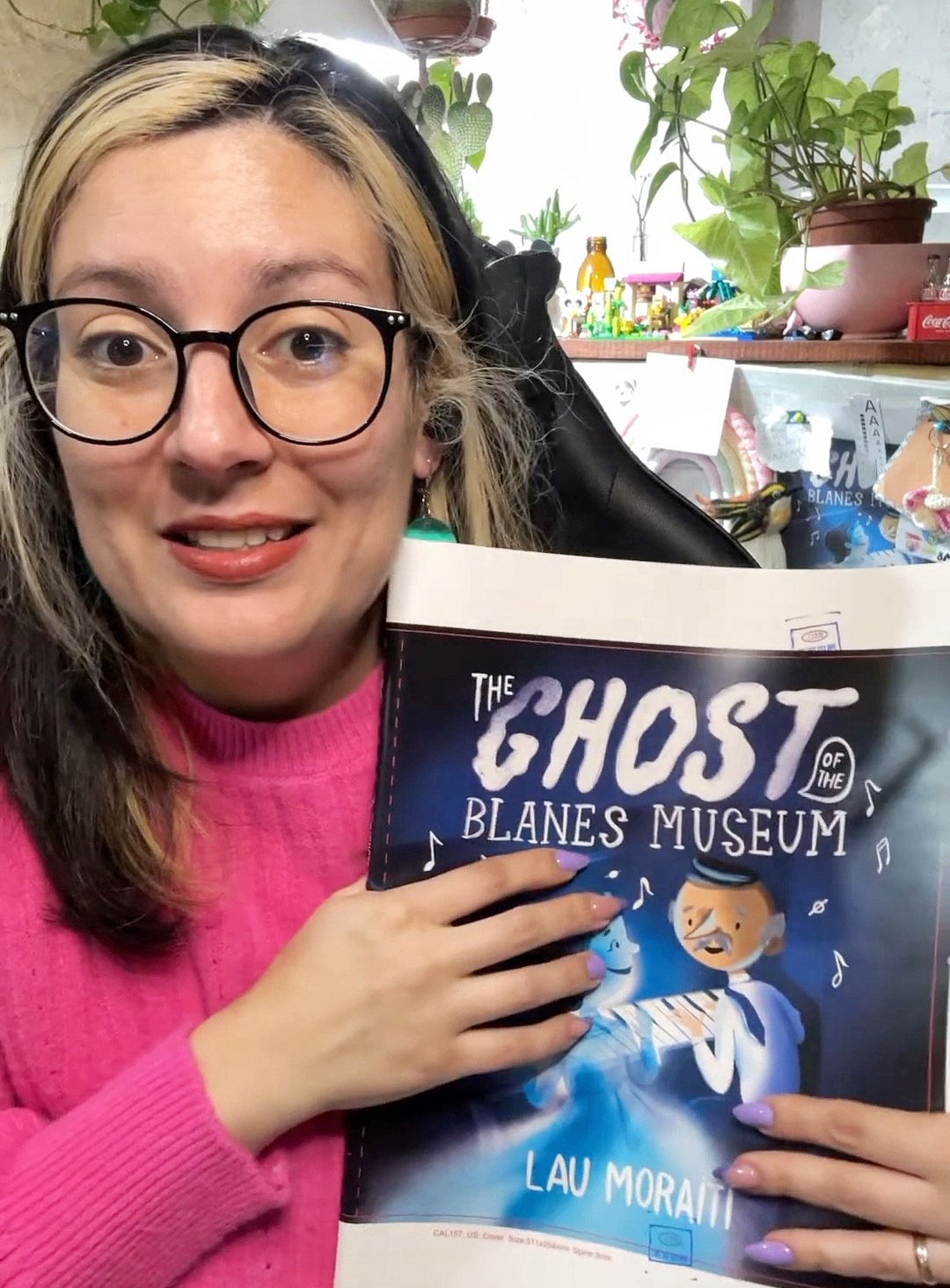 Your picture book with Paw Prints Publishing, The Ghost of the Blanes Museum, is inspired in part by an actual art museum in Uruguay. Can you tell our readers a bit about the museum’s namesake Juan Manuel Blanes and how his work as a painter in your home country of Uruguay in the 19th century inspired you?
Your picture book with Paw Prints Publishing, The Ghost of the Blanes Museum, is inspired in part by an actual art museum in Uruguay. Can you tell our readers a bit about the museum’s namesake Juan Manuel Blanes and how his work as a painter in your home country of Uruguay in the 19th century inspired you?
Uruguayan kids grow among Blanes’ paintings reproductions because he created the artwork depicting our patriotic heroes and scenes that are used in schools, books, etc. I remember visiting the Blanes Museum in Montevideo for the first time in 2007 with my class. It was a highlight of that year's trip and I’ll always treasure that small spark of art-loving being planted in my heart…Seeing the paintings I had grown up seeing as reproductions in real life was really humbling and empowering. There’s a specific painting depicting a pivotal point in our independence history that stood out for me because in reality it measures 5 meters wide and is 3 meters tall (over 16 feet wide and 10 feet tall). We also visited the Library of the Legislative Palace during that trip, which had a huge Blanes’ painting with a curious effect: the eyes and feet of the painting followed you as you moved around. It’s a perspective trick that Blanes also used in Clarita’s portrait!
School Library Journal described your endearing ghost story as “an ebullient story, winningly told.” Not only is this book a ghost story, but also a story about love, music and finding new friends after loss-even if that friendship is between an night security guard and a ghost! Why did you choose to use the legend of the museum’s ghost in your story?
At first the story was going to be told from Clara’s point of view, showing what her life was like as a ghost and what she made of the new guard. But as the story grew in my mind (and heart) I knew it needed to be rooted in someone outside of Clara’s POV to make sure she could be perceived with kindness and compassion. What caught my attention was how - according to the urban legend - the guards at the museum were used to Clarita making noises or moving paintings. That aspect of normalizing her presence felt very unique, because it allowed me to explore who could normalize a ghost haunting the workplace. Building the “who” led me to Rodríguez - the guard - and his story.
Okay, let’s talk more about your book. How did you first learn about Clarita, the famous ghost that haunts the Blane Museum in Montevideo, Uruguay?
I first learned about Clara García de Zuñiga while researching Uruguayan urban legends for an art challenge…What struck me was that I had seen the painting while my class toured the museum, and I remembered her life-like eyes. My intention, since the first time I captured her story in my art, was to spin the narrative from a vengeful ghost to one with depth. Her life story was very sad, and much was ingrained with the strict societal expectations of women. In The Ghost of the Blanes Museum, the character of Clarita is portrayed as a woman who has a complex story, but whose intention is not to haunt or spook - it’s just to exist in peace with herself.
Growing up, did you enjoy reading ghost stories?
Ghost stories and spooky stories are my favorite. Anything related to paranormal mysteries will always be my cup of tea.During summers my neighbors and I would research anything paranormal happening at the block (we lived in an apartment complex). From aliens to witches and ghosts! Among my first pre-teen novels was Fantasmas en la Sierra de las Animas (roughly translated as Ghosts at the Spirits' Hills) by Uruguayan author Helen Velando. The story is set in the countryside and explores the legend surrounding the Sierra de las Animas where it is said the spirits of indigenous people take care of our natural environments. As a preteen it made all the difference to read stories set in my country.
If a young artist came up to you today and asked for a piece of advice about art as a career, what would you say to them?
Art is always worth pursuing. Even if you need to do it 5 minutes at a time, as a hobby, or while you do other tasks. If your heart calls you towards art, you can’t ignore that calling. Sometimes it’s a little buzzing, and sometimes it motivates you to write and illustrate a book about a ghost and a museum guard!